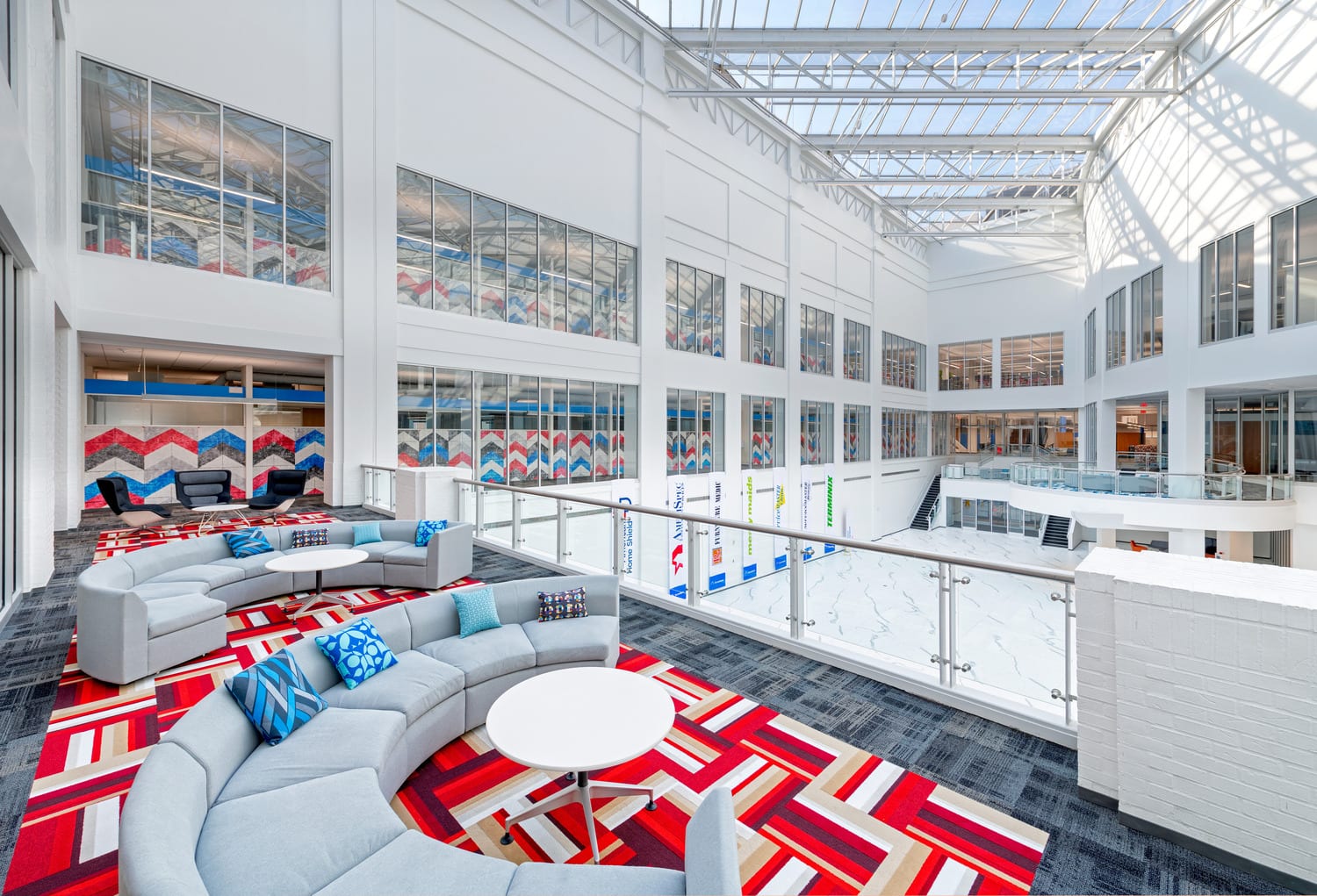
ServiceMaster, Memphis. Photography © Jasper Sanidad.
With destination malls and online retailers now attracting the majority of shoppers during the holiday season and throughout the year—a testimony to a shift in consumer buying habits—an increasing number of once popular malls are closing their doors, leaving vacant the mammoth structures that once housed a bounty of stores and drove a flourishing local economy. Repurposing these structures is a challenge that benefits the whole community when successful.
In a bold move and a stunning example of adaptive reuse, 90-year-old Fortune 1000 company ServiceMaster, (SVM), relocated its 320,000-sq-foot headquarters from a dispersed suburban campus to a vacant shopping mall and multiplex cinema in the center of downtown Memphis. An unusual venue for a corporate setting, the new facility, renamed One Service Master Center, consolidates the company’s employees, revitalizes its headquarters, and reboots the downtown dynamic, bringing 1200 people into the city center.
Built as a mall around an atrium, the irregular architecture, without a consistent column grid or core to dictate an overall order, was challenging. The massive structure has three floors in excess of 100,000 square feet each, plus a lower level. IA transformed the cleared shell, peppered throughout with random columns and x-bracing, from an inward-facing mall to an outward-facing and branded headquarters. Three large open balconies within the atrium, shown above, create the unusual experience of being outside and inside at the same time.
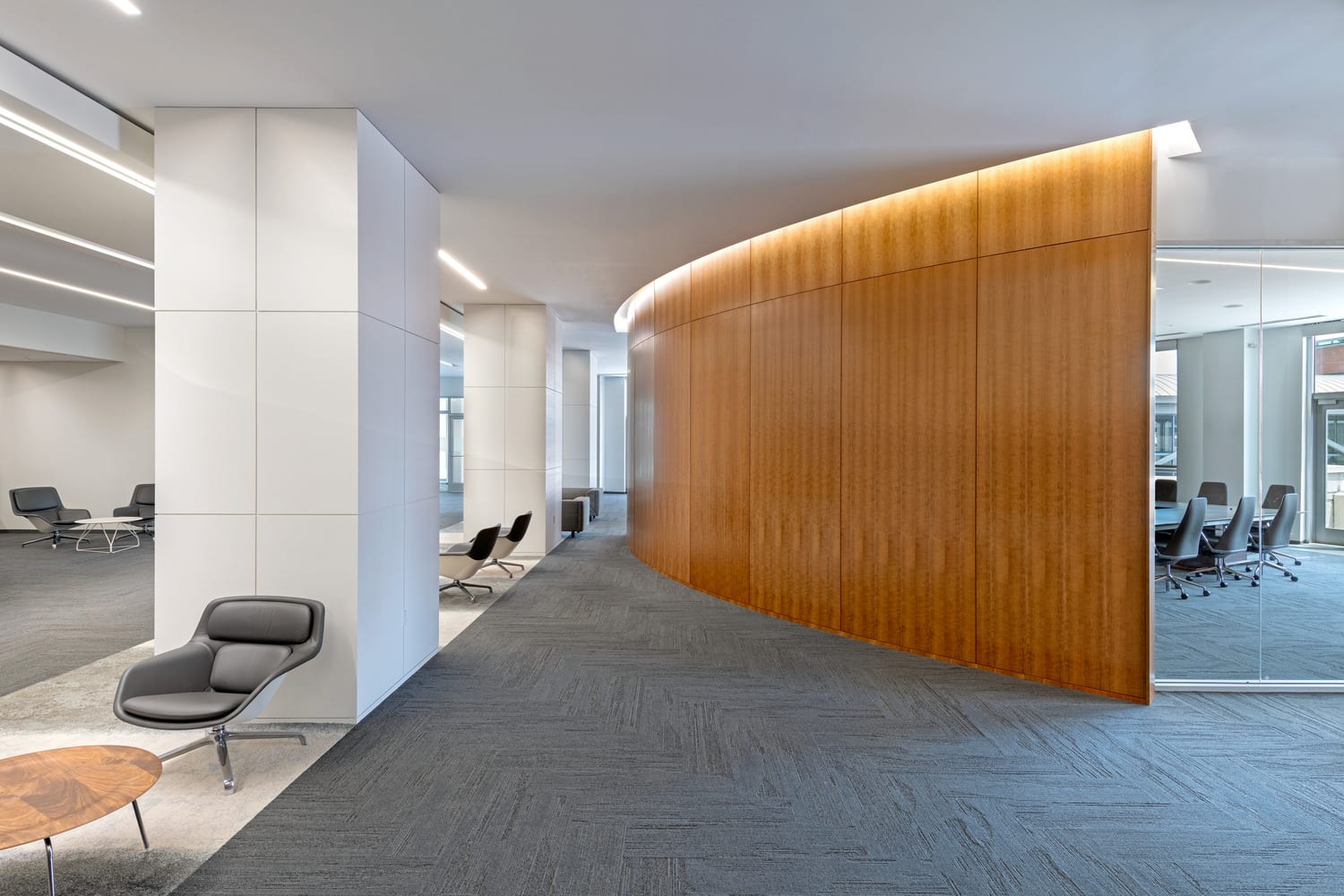
ServiceMaster, Memphis. Photography © Jasper Sanidad.
At the front of the building, a 180-degree curved wall transitions into a small hexagonal tower that is the main entrance. IA chose the curve as the unifying design element—curved sofas in multiple breakout areas, curved reception desks and tables, interior curved walls that front irregular architecture to standardize areas from floor to floor.
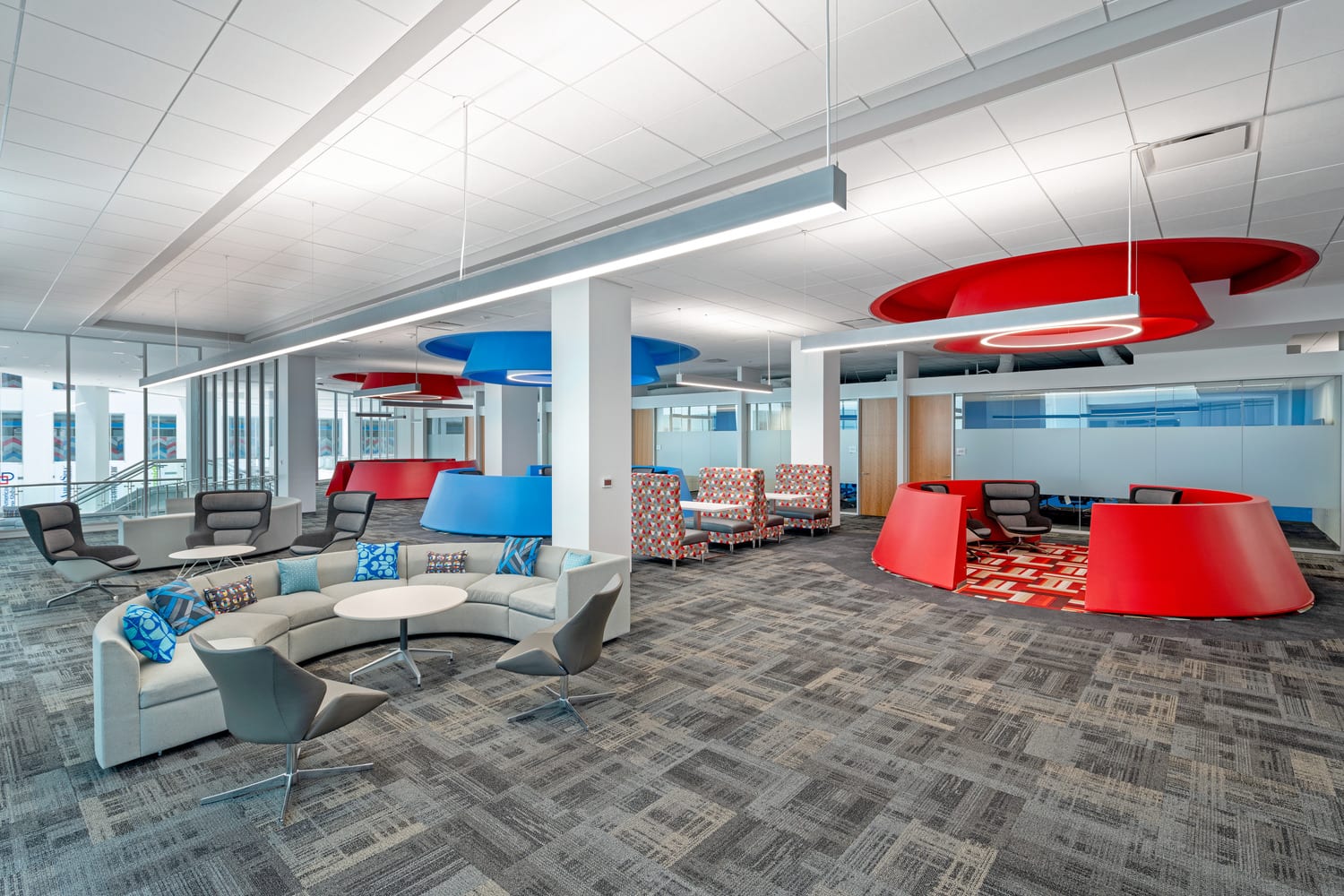
ServiceMaster, Memphis. Photography © Jasper Sanidad.
An IA innovation, the semi-private huddle pod painted solid red or blue, colors taken from the SVM chevron-shaped logo, vary in size from 10 feet to 22 feet across. Defined by a circular wall, each pod pairs with a circular light fixture at the ceiling that mimics the pod in structure and color, but is smaller and inverted to house a circular lighting element. The pods, furnished with flexible seating, complement the scale of the large space, providing visual interest and settings for meetings.
Even with the addition of 141 windows to the building’s exterior, as well as interior walls with windows lining the atrium, natural light is at a premium. Strategically positioned work groups take advantage of the daylight; enclosed spaces are located in windowless areas. The workforce enjoys multiple lounge areas, and conference rooms; a large break room on each floor offers collaborative spaces, hoteling capabilities, and casual and intimate settings.
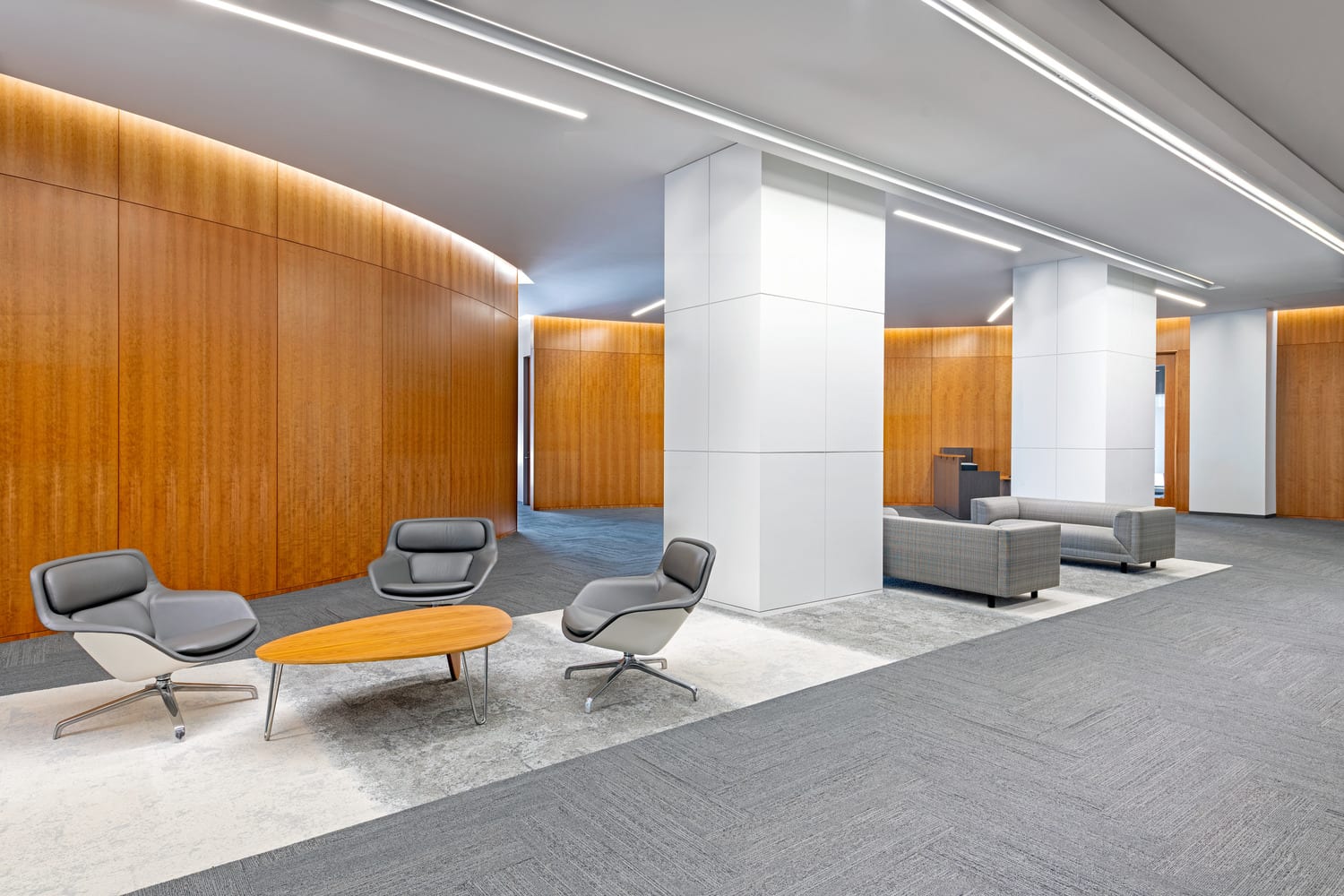
ServiceMaster, Memphis. Photography © Jasper Sanidad.
In the executive area, a line of floor-to-ceiling columns, part of the building’s original architecture, are now a design feature clad in white lacquered wood panels, punctuated by a swath of alternating white and gray carpet that aligns with a linear ceiling element, in strong counterpoint to nearby curved walls.
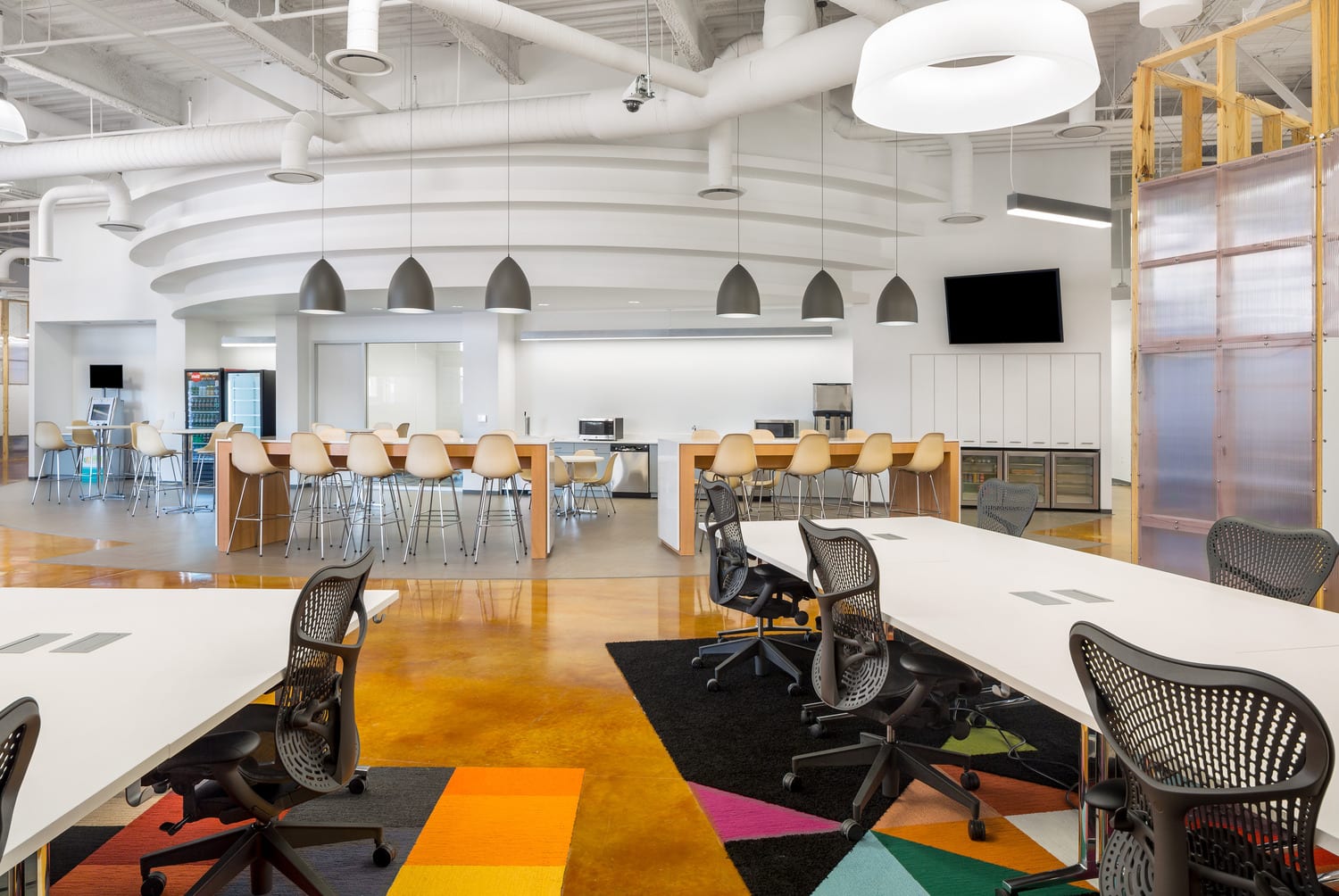
ServiceMaster, Memphis. Photography © Jasper Sanidad.
On the ground floor, ServiceMaster's 20,000-square-foot innovation center occupies the lower level and is focused on SVM’s digital transformation. This highly collaborative environment allows SVM to identify, develop, and share space with promising local startups whose business ventures align with the ServiceMaster family of companies. As a co-working space, the center engages the community and promotes knowledge sharing. Common amenities, break area, conference, and collaboration areas, spur interaction. A large flexible training space doubles as an event venue.
An IA innovation for flexibility, a custom kit-of-parts wall system is constructed of lumber, polycarbonate panels, and transparent insulation to maximize daylight; it also accommodates marker boards, bike racks, and AV displays, while projecting a start-up vibe. Colorful geometric carpets, open ceilings, and wall murals by local graffiti artists contribute to the aesthetic. A house-shaped reception desk mirrors Service Master’s house-shaped logo, one of several logos used to represent different services.
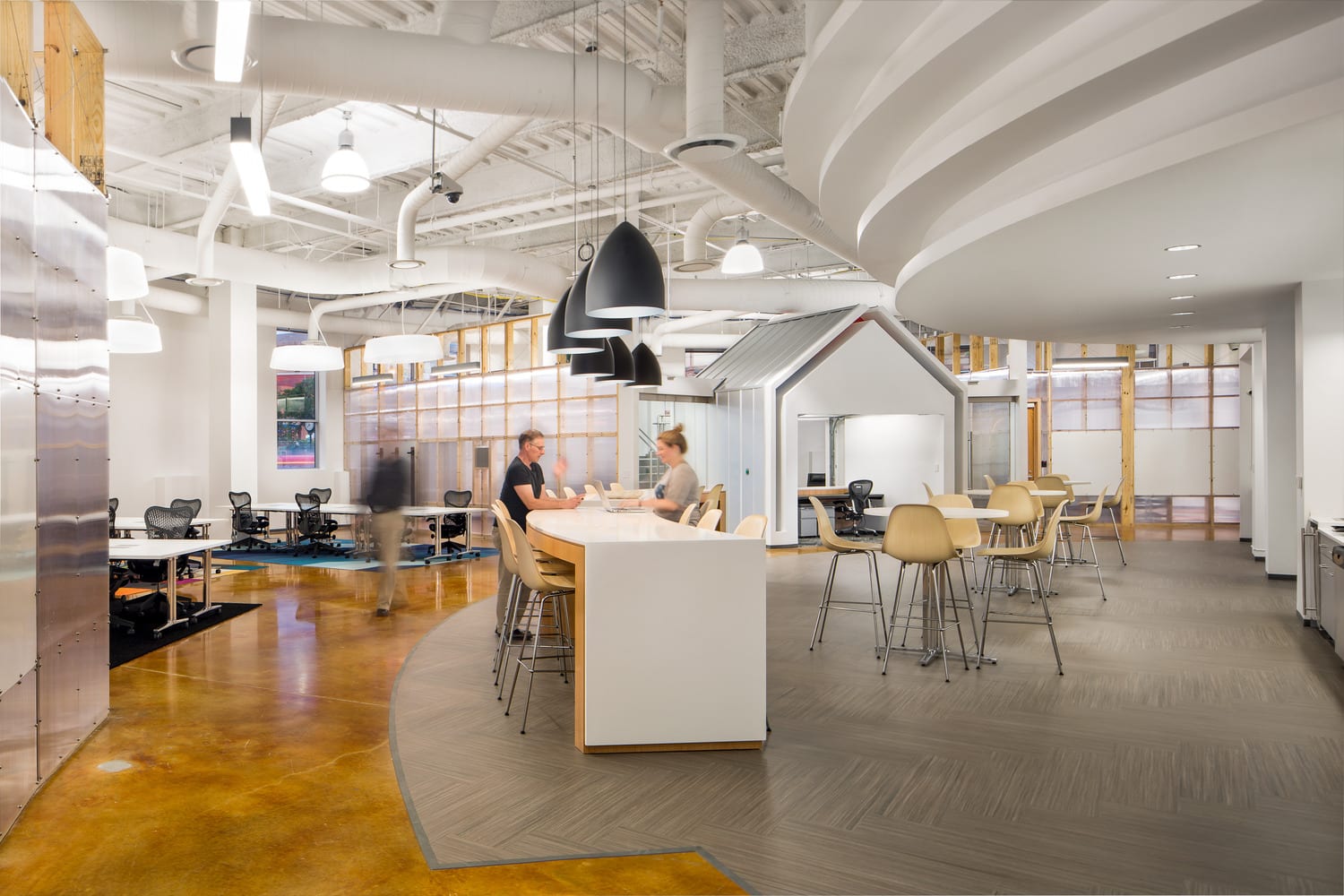
ServiceMaster, Memphis. Photography © Jasper Sanidad.
At the new headquarters, all elements come together to create a highly innovative work environment and showplace that brings people together and will carry both Service Master and downtown Memphis into the future.
Interested in Adaptive Reuse?
IA has many adaptive reuse projects in its portfolio, but only a select few that we have discussed with economic development experts across the country. Learn about a few of those projects by clicking the link below.
IA is a global firm of architects, designers, strategists, and specialists. We focus exclusively on environments through the lens of interior architecture—a radical idea in 1984, when IA was founded. We are highly connected agents of change, committed to creativity, innovation, growth, and community.
Just Like Home?Just Like HomeNetApp's Customer Experience CenterThe current emphasis on hospitality has become a defining feature of corporate interior design. Occasionally,[...]
Elevating Brand Values as ArtworkElevating Brand Values as ArtworkBy Julie Maggos, Senior Director of Experiential Design& Graham Jefferson, Intermediate Experiential DesignerBrand values matter. They[...]
ServiceMaster - a story of adaptive reuse.
Click to Tweet







